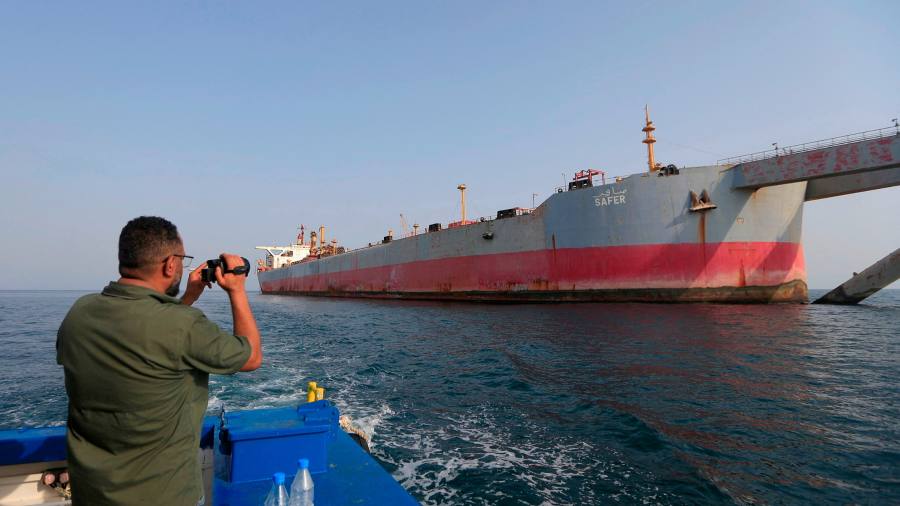Receive free Yemen updates
We’ll send you a myFT Daily Digest email rounding up the latest Yemen news every morning.
The operation to drain a stricken oil tanker off the Yemen coast that has been described as a ticking environmental time bomb will start as soon as this weekend, bringing to a head a years-long rescue mission co-ordinated by the UN.
Achim Steiner, the UN development programme official who has helped co-ordinate the mission to drain the FSO Safer, said the replacement tanker and necessary safety measures were in place, with the long-awaited ship-to-ship transfer of the crude due to start in the next few days.
“Things are moving ahead as hoped,” Steiner told the Financial Times. “As we speak we’re now preparing to move the [new vessel] next to the Safer and to begin to put the pipes from one ship to another.”
The move to begin transferring the roughly 1.1mn barrels of crude from the FSO Safer’s tanks is the culmination of a long diplomatic and technical process that many feared would result in an environmental disaster given delays and problems raising funding.
The FSO Safer, one of the largest tankers ever built, has for more than 30 years been positioned off Yemen, where it was once used to help store the country’s oil production. But since the war between Houthi rebels and Saudi Arabia started in 2015, all maintenance on the vessel has been halted, leading to fears the vessel could explode or break-up as dangerous gases have built up in its hull.
Shipping experts have warned that the FSO Safer’s cargo, which is about four times the volume of oil spilled by the Exxon Valdez off Alaska in 1989, would threaten millions of livelihoods, create an environmental catastrophe in a region ill-equipped to respond and disrupt shipping lanes.
Steiner said the “highly complex” mission to drain it had required years of negotiations led by David Gressly, UN humanitarian co-ordinator for Yemen.
Smit, the salvage experts owned by Dutch dredging group Boskalis, has been involved in preparing for the ship-to-ship transfer, including checking the structural integrity of the vessel and neutralising the gases in the ship’s hull. Independent insurance advisers had also been monitoring the salvage operations’ progress.
Steiner cautioned that there will still risks in the operation, but said there was a “three-tier contingency plan” in place in case moving the oil resulted in a spill or a break up of the tanker.
A small spill would be dealt with by Smit and if “there’s a larger leak we have national oil response spill plans with neighbouring countries and the Yemeni authorities. Should there be a massive oil spill then essentially an international response kicks in, including aircraft and other vessels,” Steiner said.
He said the operation had been “de-risked to the maximum extent possible. But the greatest risk was always not to do anything.”
Steiner praised Howden, the London-based insurance broker that helped co-ordinate a highly complex insurance package for the operation, which has been syndicated across 13 insurers. Howden had waived its fees for the project, he added.
Steiner said that despite having raised funds totalling more than $114mn at the end of May, the mission still required “emergency” bridge financing via the UN’s rapid humanitarian response teams.
He was critical of the oil and gas industry for being slow to offer financial assistance despite having enjoyed record profits last year.
“I don’t want to in any way diminish the contributions of the pledges made [from oil producers], which at the moment amount to about $12mn,” Steiner said.
“But it’s an industry that should perhaps ask itself a question about why it has not been more forthcoming . . . the FSO Safer would not have been there without the oil and gas contracts and the industry investing in Yemen and supporting the export of oil.”
Read the full article here



